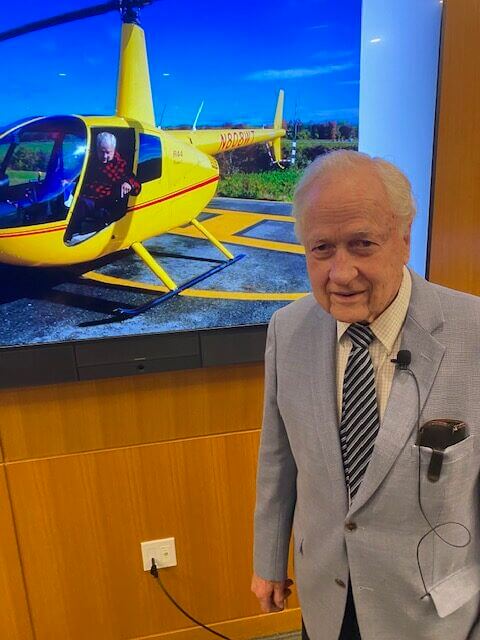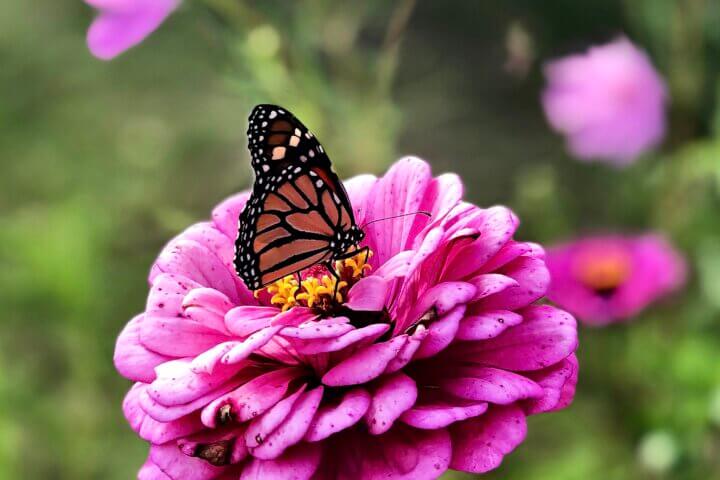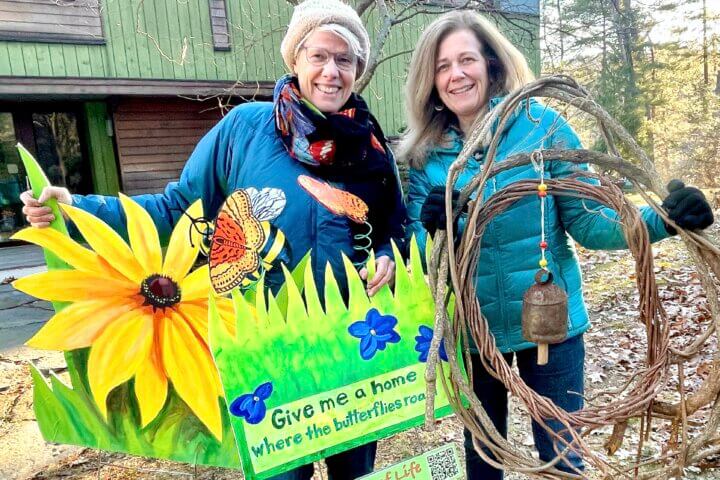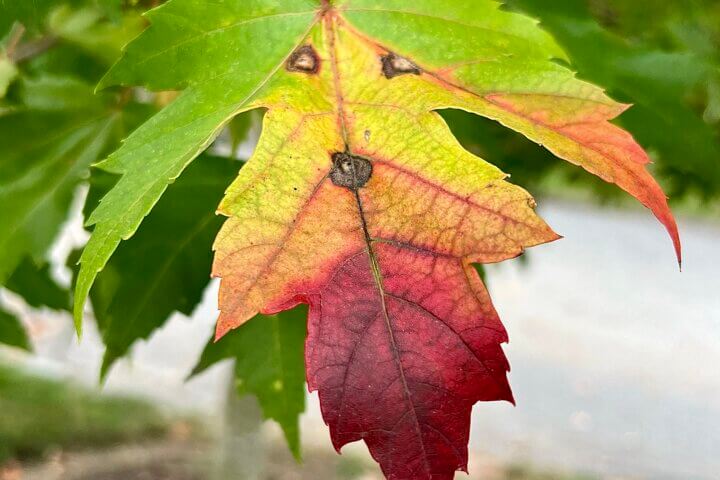In 1850, if you wanted a walking companion to amble about Concord to learn what’s up, your best choice was to knock on Henry Thoreau’s door.
Today you would call Richard Forman. Both are noticers, naturalists who overlook nothing as they stride through different environments. They see, they hear, they feel nature’s interconnectivity, the bonds and interdependence between fields and forests, between woodland wildlife and wetland habitats, the scramble of biodiversity for survival, and the shifting cycles of life and seasons on which we depend for our health and welfare.
It was good fortune for the 130 residents who filled the Goodwin Forum at the Concord Public Library to hear one of Richard T.T. Forman’s rare public lectures last week hosted by Anke Voss and Delia Kaye, co-sponsored by the Department of Natural Resources and Concord Land Trust.
Rather than his usual walk in the woods, Professor Forman let us accompany him in a helicopter, with the door off so he could photograph and observe changing Concord landscapes.
For 36 years he taught ecology at Harvard having trained at Haverford and University of Pennsylvania, with specialization in landscape ecology, landscape architecture, land-use planning, road ecology, and the science of urban ecology beyond city and town boundaries. His seasoned eye from decades of field research toggled between two sets of photographs, his own color shots taken last October from the chopper and historic black and white photographs taken 85 years ago after the hurricane of 1938.
Forman’s observations were an exercise in learning how to see. Natural features like rivers and ponds were navigational markers for the untrained eye. Roadways, agricultural lands, and housing sprawl helped the audience find their way through the canopy to Concord’s trails and public lands so many know well. We learned how Concord’s regrowth from the tree-less 19th century has shaped the landscape and spatial heterogeneity of our village. We puzzled over the 1836 decision to eliminate the Mill Pond. Forman took us to Walden Pond to explain how Goose Pond groundwater flows into Walden and out through meadows to Fairhaven Bay all because of the sandy composition of our soils.
We walked in Thoreau’s footsteps along the rail bed back into town to witness the devastating impact of Concord’s railroad pesticides on plant life and wildlife. We visited the turn-of-century Amusement Park at the north end of the pond where Walden Station greeted thousands from Boston who were day campers, and day polluters, in Victorian dress, a generation after 1000 Irish laborers and families had camped in the same woods while laying the railroad.
As Forman’s helicopter made tight turns we learned about the rich riverine habitat for trees of different varieties along our meandering Sudbury, Assabet and Concord Rivers. He pointed out not one but six wildlife corridors tunneling under Route 2 which support migrations of wildlife where people do not cross. We observed the diverse habitats at Egg Rock, the Calf Pasture, and Brewster’s Woods comparing 85 years ago with today, reminding us that we are stewards for a fast-changing world.
We took in the expanse of Estabrook Woods, Concord’s contested 1200-acre public-private Urban Forest, the fourth or fifth largest New England municipal treasure. The offensive scars from industrial mismanagement of Nuclear Metals’ 48 acres of radiated ground water and dumping grounds were clearly visible from our overflight, a reminder that Nature cannot heal all wounds, like it has the 1928 ice storm, the 1936-mile-wide flood at North Bridge, and devastation from the 1938 hurricane.
But Nature in partnership with alert citizenry and progressive town management can inventory and protect its biodiversity, its trees and natural resources as if it were a living history passed on from generation to generation.





